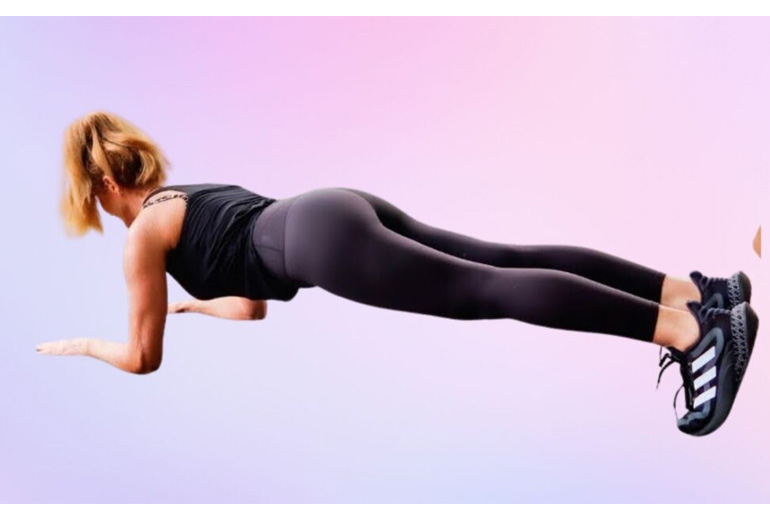Struggling to hold the plank pose for even one minute is a common challenge, as this exercise demands considerable core, shoulder, and leg strength. If you find it difficult to maintain the position, it likely indicates that these muscle groups need more endurance. However, with targeted training, you can enhance your strength and stamina. Incorporating specific exercises designed to improve your plank performance can help you build the necessary endurance, making it easier to hold the pose for longer durations.
What is the Plank Exercise?
The plank exercise is an isometric workout that focuses on strengthening core muscles, including the rectus abdominis, internal and external obliques, transverse abdominis, and the erector spinae group, which helps maintain spinal stability. Additionally, planks target the back, shoulders, and leg muscles, contributing to improved stability and posture. Holding the position for longer durations increases muscle engagement, making it an effective exercise for enhancing both endurance and core strength.
What are the Benefits of Doing Plank?
Incorporating plank exercises into your daily routine provides numerous health benefits. Primarily, it strengthens the core, which enhances balance and posture, thereby reducing the risk of back pain. Planks engage multiple muscle groups, including the abs, shoulders, and legs, aiding in body toning and sculpting. Regular practice can lead to significant gains in strength and endurance, as noted in research published in the 2021 Medicina journal. Furthermore, planks can boost metabolism and burn calories, supporting weight loss efforts.
Holding a plank for one minute may seem simple, but it requires significant core strength, stability, and endurance. If you’re struggling to maintain a plank for this duration, incorporating these seven exercises into your routine can help strengthen your core, back, shoulders, and leg muscles.
1. Glute Bridges
Glute bridges enhance your glutes, lower back, and hamstrings, supporting your lower back during planks and improving stability. To perform, lie on your back with knees bent and feet flat, press your heels into the ground, lift your hips toward the ceiling, squeeze your glutes at the top, and lower back down. Aim for 3 sets of 12-15 reps.
2. Mountain Climbers
This dynamic exercise strengthens your core and improves endurance. Start in a high plank position, bring one knee toward your chest, quickly switch legs, and continue alternating while maintaining a strong plank. Aim for 3 sets of 30 seconds.
3. Plank with Shoulder Taps
This variation builds strength in your core and shoulders. In a high plank position, lift one hand to tap the opposite shoulder, then switch sides while keeping your hips stable. Perform 3 sets of 20 shoulder taps.
4. Side Planks
Targeting the obliques, side planks strengthen core muscles, improving plank stability. Lie on your side, lift your hips to form a straight line from head to feet, and hold for 20-30 seconds on each side, aiming for 3 sets.
5. Leg Raises
Leg raises engage the lower abs, stabilizing your pelvis during a plank. Lie on your back, lift your straight legs to a 90-degree angle with your torso, and lower them without touching the ground. Perform 3 sets of 10-15 reps.
6. Wall Sit
This exercise strengthens your quadriceps, glutes, and calves, aiding balance during a plank. Stand against a wall, slide down into a seated position with knees bent at a 90-degree angle, and hold for 30-60 seconds. Aim for 3 sets.
7. Bird Dog
Bird dogs improve balance and core stability, essential for proper plank form. Start on all fours, extend one arm forward and the opposite leg back, hold briefly, and switch sides. Perform 3 sets of 10 reps on each side.
How to Perform a Plank
To execute a plank correctly, follow these steps:
- Choose a comfortable space free from distractions.
- Warm up your body with stretching exercises.
- Lie face down, arms bent with elbows under your shoulders.
- Push up onto your toes and forearms, creating a straight line from head to heels.
- Engage your core by squeezing your abs and glutes, ensuring your body remains straight.
- Keep your head neutral and gaze down to avoid neck strain.
- Breathe steadily throughout the hold, maintaining a tight core.
- Aim to hold the position for at least one minute or as long as possible.
- Conclude with gentle stretches or deep breathing to relax your body.
Common Mistakes to Avoid
While performing planks, avoid these common mistakes to maximize benefits:
- Sagging Hips: Letting your hips sag can strain your lower back and diminish core engagement.
- Lifting Hips Too High: Avoid shifting core engagement to your hip muscles and shoulders by keeping your hips aligned.
- Looking Up: This can strain your neck; instead, keep your head aligned with your spine.
- Holding Your Breath: Breathe steadily to make the exercise easier.
- Arching Your Back: This reduces plank effectiveness and increases injury risk, so stay mindful of your form.
By practicing these exercises regularly, you can gradually build your strength and eventually hold a plank for one minute or longer.
Disclaimer:
The information contained in this article is for educational and informational purposes only and is not intended as a health advice. We would ask you to consult a qualified professional or medical expert to gain additional knowledge before you choose to consume any product or perform any exercise.







